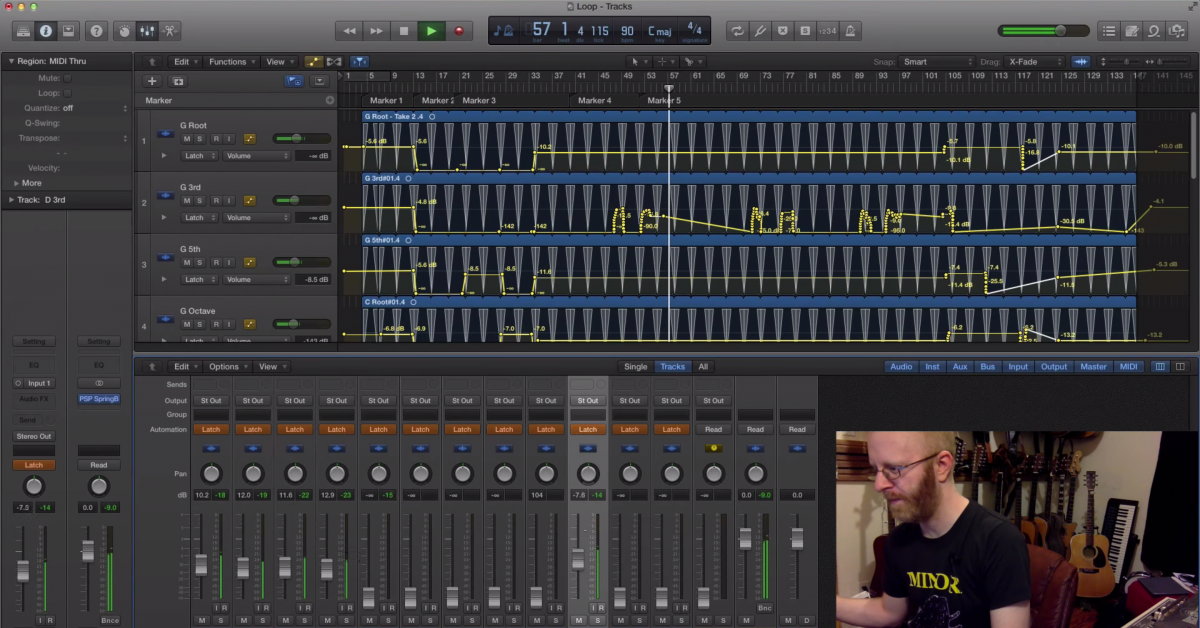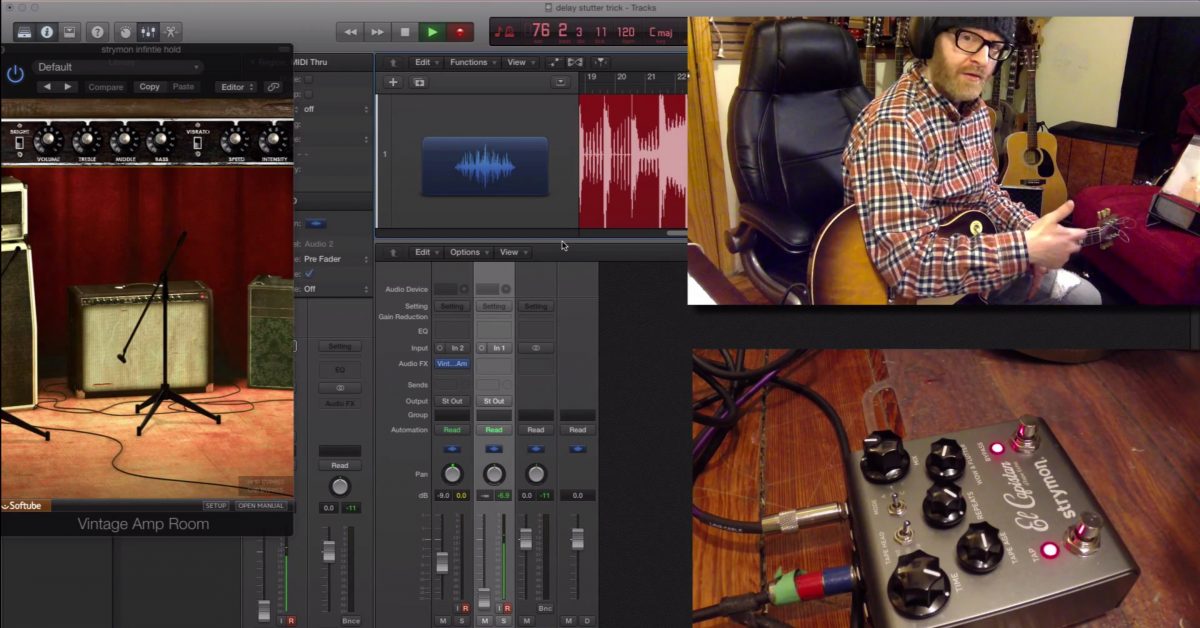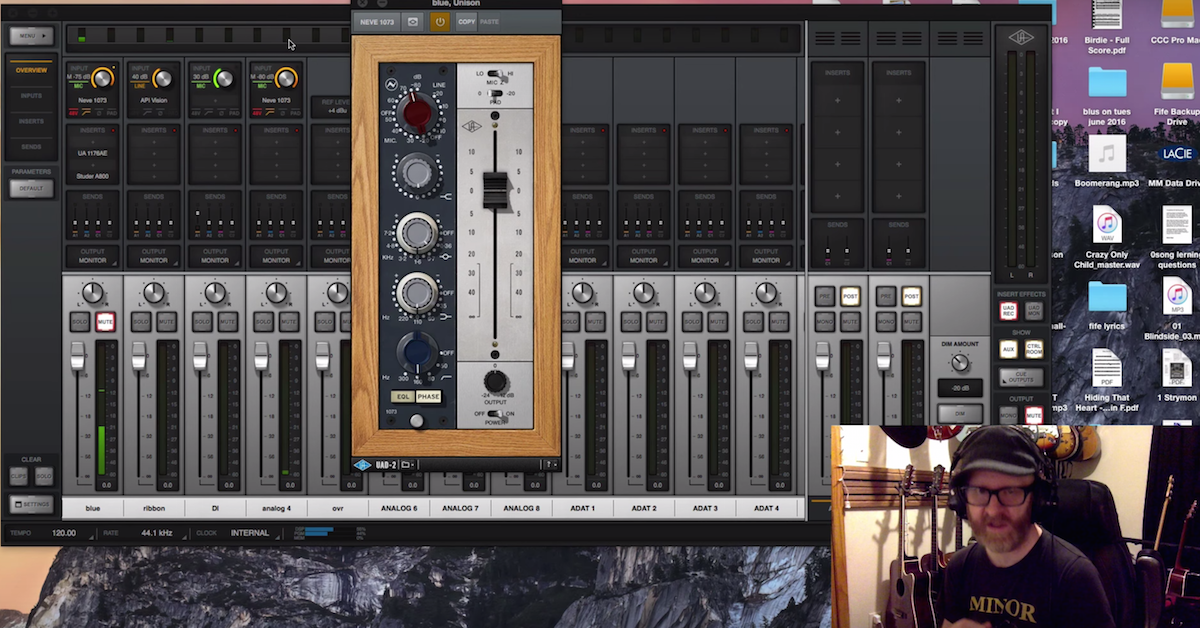The Basics of Chords — Part 1
Article Content
Music is often said to consist of three things: rhythm, harmony and melody.
Although this is not always true for music of other traditions than the western tradition, an Indian Raga doesn’t have harmony in the sense we mostly think about it (chords). Interesting chord progressions are the inspiration for, and the starting point of, a lot of great songs.
Let’s get the basics under our belt so we can start digging in to the creative part.
I want to make one thing clear before we begin, though; I do not suggest that you sit down and think about these principles when you’re composing or coming up with a new song from scratch. Your intuition and inspiration should be more than enough at that point.
However, when you’re stuck for ideas, or feel the need to add some excitement to your composition, using these principles to analyze what you’ve done so far and see what tools you can use to take it to the next level is a godsend.
Equal Temperament
Speaking of western music, we have something called equal temperament. This means that that the distance between any two semitones is the same.
This in not true of the “natural scale.” A closer look at the harmonics of a given tone will reveal this. So why alter the frequencies of the notes?
Well, it gives us the benefits of being able to play in all twelve keys. So even though we have to accept slightly out of tune intervals, we have the possibility to borrow chords from other keys and modulate to a different key all in one composition. This is pretty great.
If we didn’t have equal temperament tuning we wouldn’t be able to play an E major chord and an F minor chord without retuning the instrument in between. The major third of an E major chord and the minor third of an F minor chord are the exact same frequency in our tuning system, whereas they would differ with 38 cents in the natural tone series. Anyone who played with tuning in cents in their DAW knows that it’s a pretty big deal to change the tuning this much.
Ok, this is quite complicated stuff, and something we luckily don’t have to think about too much, but it is the basis of our exploration of a creative use of all the chords at our disposal.
The Melody of Harmony
Although harmony and melody are seen as two separate entities, they can actually be hard to separate from each other at times. Re-harmonizing (changing the chords of) a song can really change the way the melody sounds.
An extreme case in point is Antonio Carlos’ “Jobim’s One Note Samba”, which uses mostly one single note as melody, and lets the chords move the melody. Being proficient at finding a variety of chords that work over a given melody and recognizing the different flavors it gives the melody is a great tool to have in songwriting, composition, arranging and even remixing.
The Major Scales
Knowing what chords you have at your disposal means that you need to know at least some of the fundamentals of music theory. I will mostly use the key of C major as an example in this article, but try to learn as many major scales as you can, and also the chords that are diatonic (uses only the notes in that key/scale) to the key in question.
These are the notes of the C major scale (all the white notes on the piano):
C D E F G A B
If you harmonized the major scale, it would look like this:
C Dm Em F G Am Bdim
As you can see, the first, fourth and fifth chords are major. And the second, third and sixth chords are minor. This is true for every major key. So, what about the seventh chord?
Bdim stands for B diminished and means that the fifth of the chord is lowered a semitone. The seventh chord is not very commonly used in modern music, but is found a lot more frequently in classical music.
The Function of Chords
Chords are not randomly chosen in a composition. There is a reason why a specific chord is often chosen in a certain context.
Harmony is all about creating tension and releasing that tension. To understand this, and to understand which chords can replace which, you need to grasp the concept of “function.” You can think about it like kitchen utensils; some tools are a more obvious choice for the job, but there are other similar tools that can do it. Likewise, you wouldn’t use a spatula to grate carrots. Those tools simply do not share the same function.
Let’s look at the chords from the C major scale again and their three functions:
Tonic
C major is the first chord of the scale. It’s known as the tonic. It’s function is to provide stability, release and rest in the key of C.
There are two more chords that have a tonic function in the key of C. These are E minor and A minor. Note that they all have notes in common. Em shares the notes E and G with the C chord; and Am contains the notes C and E.
Subdominant
The subdominant function is less stable/restful than the tonic function. It has some movement in it. Its main function is to pull away from the tonic. If the tonic equals sitting down in your favorite armchair, the subdominant is getting up and walking in a slow, comfortable pace.
The main subdominant chord in C major is the F chord. Dm has the notes F and A in common with the F chord and is also subdominant. Since the subdominant chords do not create a lot of tension that has to be released by going back to a tonic chord (state of rest) they are very versatile and can usually be followed by either a tonic, subdominant or a dominant chord.
Dominant
The dominant chord is the most unstable of the bunch. It creates tension that really wants to be resolved back to the tonic. In C major, the dominant chord is G, and usually has an added seventh (the note F in this case) to give it a dissonant interval between the third of the chord (B) and the seventh of the chord (F).
When the B resolves into a C and the F resolves into an E (the tonic and third of the C major chord), the tension is released and we get the sense of “coming home”. The last chord that we haven’t given a function is Bdim. It is also dominant, but as mentioned before it is not commonly used in popular music.
In Practice
Ok, let’s have a look at some music. This is the first part of a verse from the Beatles tune, “Hey Jude,” transposed to C major. Can you see how the chord progression flows in terms of the chord functions?
C G
Hey Jude don’t make it bad
G7 C
take a sad song and make it better
F C
Remember to let her into your heart
G C
and then you can start to make it better
That was the basics, everyone. In the next part, the real fun begins.






